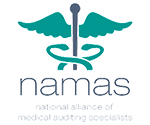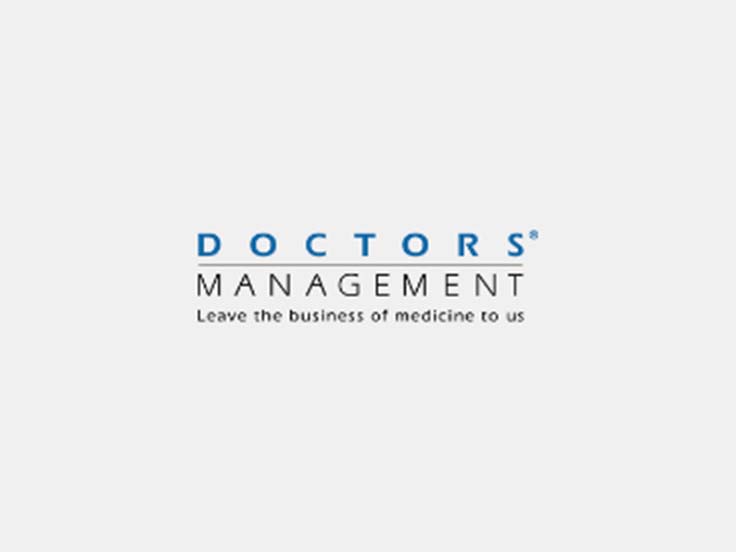Pam Vanderbilt, CPC, CPMA, CPPM, CPC-I, CEMC, CEMA
This auditing and compliance “Tip of the Week” was originally published by the National Alliance for Medical Auditing Specialists (NAMAS), a division of DoctorsManagement.
If you haven’t been living under an exam table for the last few months, you have surely heard that CMS decided in its 2020 Physician Fee Schedule final rule to accept the AMA’s CPT revisions to Office or Other Outpatient E/M codes beginning in 2021. These changes completely alter the way services reported with CPT codes 99201-99215 will be selected. Just as your inbox has probably been flooded with e-mails about this, so have your providers’ inboxes.
It is important that we speak with providers now about these changes and their likely impact because there is (as always) room for misconceptions about the information. Let’s look at some of these conversation points.
1. Medical Decision-Making
Because the level of service supported will be selected based on either medical decision-making (MDM) or time, we have already heard some providers say that they will no longer need to document any history or exam. This is not what the new CPT information states. Instead, each of the new code descriptions for 99202-99205 and 99212-99215 includes “which requires a medically appropriate history and/or examination.” We need to make sure our providers understand that, while we will no longer be scoring history and exam on the audit grid for these visits, they are still required to document a level of history and exam that is “medically appropriate” and clinically relevant to the presenting problem(s).
2. Reporting Services Based on Total Time
The definition of time for selecting a level of service will change to eliminate the requirement that the visit must be dominated by counseling and coordination of care. Instead, a provider may choose to report services based on the total time the provider spends on the day of the encounter. While this time will not have a face-to-face requirement, it must be time spent in direct care of that patient. Crucially, this will no longer be limited to face-to-face time but will include non-face-to-face time spent on the same date of service, so long as the time can be attributed directly to caring for that patient. As discussed in the point above, this does not mean that merely documenting total time spent will be adequate to support a level of service. Providers will still need to document clinically relevant information in addition to documenting time spent.
3. Implementation Timeline
Providers have heard these changes are published in the final rule for 2020. Make sure they are aware that the rules do not take effect until January 1, 2021. If they suddenly begin eliminating documentation of family history on new patient visits now (because how many times have we heard from them family history for an 85-year-old patient is not relevant?), they will not support the higher levels of service in 2020.
4. Continuing Importance of Medical Necessity
Only the codes for Office or Other Outpatient E/M are changing in 2021. We must stress to providers that all other E/M codes will still be selected using the 1995 or 1997 documentation guidelines. Keeping all of this information in mind when speaking with our providers over the coming months will help ease the transition, but there is also one more factor for auditors to remember. Nothing in these publications indicates that medical necessity will cease to be the overarching criterion in the selection of E/M services. Unless there is a significant change in CMS policy, the providers will continue to be expected to paint a picture of the complexity of caring for a patient’s presenting problems at each visit to support the level of service. As we prepare ourselves and our providers to make the move to the new MDM table for office visits, it is important we recognize that how we score MDM will transition from the current point system on our audit grids to focusing on the provider’s documentation of elements of complexity to treat the problems addressed. If we can help our providers understand how to document the clinically relevant complexity now, it will help them support all E/M services regardless of place of service, even before 2021.
As a final reminder to each of you reading this, there are always going to be changes that we need to be aware of as professionals in the healthcare industry, but none of them are important enough to stop you from enjoying time with family and friends. Here’s wishing all of you the very best of the holiday season and a very Happy New Year!
This Week’s Audit Tip Written By:
Pam Vanderbilt, CPC, CPMA, CPPM, CPC-I, CEMC, CEMA
Pam is a NAMAS approved trainer and Senior Compliance Consultant with our parent organization, DoctorsManagement
What to do next…
- Contact us to discuss your audit needs by calling (800) 635-4040 or email [email protected].
- Read more: What can you expect from a coding and compliance review?
Here’s why thousands of providers trust DoctorsManagement to help improve their coding and documentation.
Quality of coders and auditors. Our US-based auditors receive ongoing training and support from our education division, NAMAS (National Alliance of Medical Auditing Specialists). All team members possess over 15 years of experience and hold both the Certified Professional Coder (CPC®) as well as the Certified Professional Medical Auditor (CPMA®) credential.
Synergy – DoctorsManagement is a full-service healthcare consultancy firm. The many departments within our firm work together to help clients rise above the complexities faced by today’s healthcare professionals. As a result, you receive quality solutions from a team of individuals who are current on every aspect of the business of medicine.











